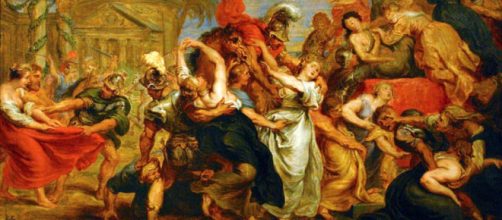On New Year's Day 2024, London-based art historian Olivia McEwan summed up museum shows in the previous year this way: “True to the zeitgeist of championing women in the arts, 2023 museum programming has consciously put female artists front and center.”
By way of example, McEwan pointed out that even the venerable Royal Academy of Art, established in 1768, allowed a one-woman show for the first time to performance artist Marina Abramovic.
Say what?
So, imagine my surprise when McEwan went on in the same article to tout a show called “Ruben & Women” at the Dulwich Picture Gallery in London.
Peter Paul Rubens?
Since when does “championing women in the arts” mean advocating for women painted by men? Rubens, of all people!
Putting him in a story about female artists is not only ridiculous on its face, but also because he was, as I see him, a chauvinist. Allow me to count the ways.
Rubens painted so many fleshy females without their clothes that women of ample proportions became known as “Rubenesque.”
And while undressed women are a commonplace in art, Rubens made a fetish of it, making women even fleshier by overdrawing their breasts. He even featured that detail in a painting of a neutral subject – “Diana Returning from the Hunt.”
Then there’s his frequent picturing of gang bangs as in “The Rape of the Daughters of Leucippus,” “The Rape of Europa,” “The Rape of Ganymede,” and “The Rape of the Sabine Women.”
That latter painting may well be the most neanderthal look at violence against women in all art history.
Granted artists have painted the abduction of the Sabine women many times. But Rubens’ version seems a particularly unfeeling depiction of men subjugating women.
Criminal assault
No matter where you look in this painting, you see the Sabine wives getting ripped from their loved ones by the grinning soldiers of Rome. And to juice it up, Rubens hyper-sexualizing the scene by showing the women with their breasts exposed and the soldiers raising up their skirts.
You have only to compare Nicolas Poussin’s version of the same abduction with Rubens’ to know what a feeling rendition looks like.
Poussin showed his reaction of horror to the rapes by describing the women’s aged parents trying to fight back and the women’s babies left crying on the ground.
Despite all that, McEwan says this about Rubens: “Far from objectifying his models, he depicted a nuanced female body.” Nuanced? Rubens?!
Even in the Dulwich exhibit example “Venus, Mars and Cupid,” normally a platonic subject of love triumphing over war, Rubens pays his usual attention to Venus’ upper anatomy.
But Rubens’ fixation on mammary goes further. As if making sure you see what he wants you to see, he describes Venus lifting and point one of her breasts in her son Cupid’s direction.
Perhaps conceding that there’s something to be uncomfortable about with Rubens’ work, Jennifer Scott, director of the Dulwich Picture Gallery, captioned an essay she wrote on the institution’s website “Whose afraid of Peter Paul Rubens?”
Scott explained that the caption refers to all the social media censorship of Rubens’ nudes, as well as the skittishness that she observed among museum visitors gazing upon Rubens fleshy females.
“Rubens is not easy,” Scott admitted. Still, she never mentions his habit of juicing up his nudes. Instead, she says, “Rubens was a family man.” In that case, his unfeeling painting of the Sabine wives’ is all the more disturbing.
“Who’s afraid of Peter Paul Rubens?” I am, Jennifer. I am.


